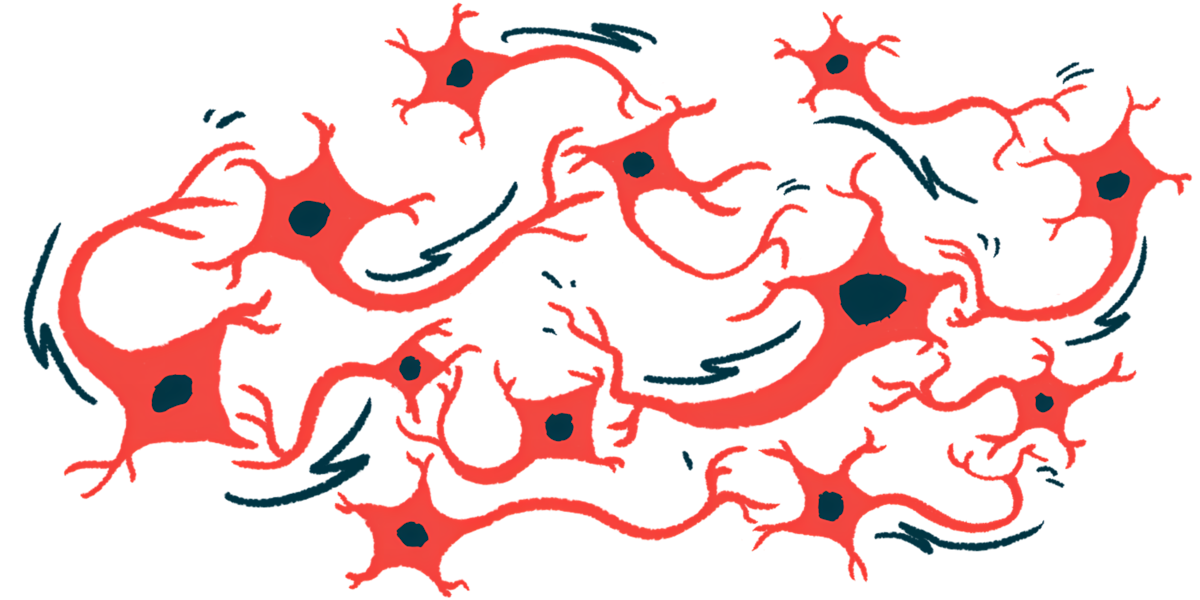Targeting protein may limit toxic spread of alpha-synuclein in brain
Scientists ID TMEM16F protein as possible Parkinson's therapy target

Targeting a membrane protein called TMEM16F may help reduce the spread of toxic clumps, or aggregates, of alpha-synuclein — a hallmark of Parkinson’s disease — across the brain, according to a new study by a team in Israel.
The scientists found that a genetic variant of the TMEM16F gene that’s highly prevalent in people of Ashkenazi Jewish origin — who have a relatively high incidence of Parkinson’s — promotes the spread of the alpha-synuclein protein.
“Our findings mark TMEM16F as a possible new target for the development of effective treatments for Parkinson’s disease,” Stav Cohen-Adiv Mordechai, a PhD student at Tel Aviv University in Israel and the study’s first author, said in a university press release.
The team noted that this research is still in its early stages, and that “quite a number of questions still remain to be explored,” according to the release.
But “if, by inhibiting TMEM16F, we can stop or reduce the secretion of defective [alpha]-synuclein from brain cells, we may be able to slow down or even halt the spread of the disease through the brain,” Cohen-Adiv said.
The study, “TMEM16F regulates pathologic α-synuclein secretion and spread in cellular and mouse models of Parkinson’s disease,” was published in the journal Aging Cell.
Looking for drivers of toxic alpha-synuclein protein spread in brain
Parkinson’s is caused by the progressive loss of nerve cells that produce dopamine, a signaling molecule used by nerve cells to communicate. Its loss leads to the various motor and nonmotor symptoms that mark Parkinson’s. While the cause of nerve cell death is unclear, the formation and spread of alpha-synuclein fibrils that are toxic to nerve cells are known to play a role.
Evidence indicates that alpha-synuclein fibrils may propagate through the brain in a way similar to prions. Essentially, when these fibrils accumulate in one area, they encourage the nearby protein molecules to also aggregate into clumps. Because this spread of fibrils is believed to play a key role in the progression of Parkinson’s disease, halting it could potentially serve as an effective therapeutic approach.
Now, the scientists identified a novel potential player in the spread of alpha-synuclein fibrils.
For many years researchers have tried to discover how the [toxic] version of [alpha]-synuclein spreads through the brain, affecting one cell after another, and gradually destroying whole sections of the brain. … We focused on the protein TMEM16F, a regulator situated in the cell membrane, as a possible driver of this lethal process.
The team focused on the TMEM16F protein, which belongs to a larger protein family located at the cellular membrane, and works as a channel for ions and certain fats, or lipids. According to the researchers, this family of proteins “has been recently associated with cancer and infectious diseases but is less known for its role in aging-related diseases,” such as Parkinson’s.
“A key mechanism of Parkinson’s disease is the aggregation in brain cells of the protein [alpha]-synuclein (in the form of Lewy bodies), eventually killing these cells,” Cohen-Adiv said. “For many years researchers have tried to discover how the pathological version of [alpha]-synuclein spreads through the brain, affecting one cell after another, and gradually destroying whole sections of the brain. Since [alpha]-synuclein needs to cross the cell membrane in order to spread, we focused on the protein TMEM16F, a regulator situated in the cell membrane, as a possible driver of this lethal process.”
The researchers used nerve cells, or neurons, from the brain of a mouse model genetically engineered to lack the TMEM16F protein. They then used a specially engineered virus to deliver a mutant form of alpha-synuclein, called A53T, that is highly prone to clumping and spreading in Parkinson’s.
When compared with neurons with normal TMEM16F, which were used as controls, the spread of mutant alpha-synuclein was impaired in those without the protein. The same was observed in a mouse model of Parkinson’s disease, in which targeting and reducing the levels of TMEM16F reduced alpha-synuclein spread.
TMEM16F mutation common in Ashkenazi Parkinson’s patients
To learn more, the researchers next collaborated with scientists at the Neurological Institute at the Tel Aviv Sourasky Medical Center. Together they analyzed variations in the TMEM16F gene sequence in 250 patients with Parkinson’s or dementia with Lewy bodies who were of Ashkenazi Jewish origin.
“The incidence of Parkinson’s among Ashkenazi Jews is known to be relatively high, and the Institute conducts a vast ongoing genetic study on Ashkenazi Jews who carry genes increasing the risk for the disease,” said Avraham Ashkenazi, PhD, the study’s senior author. “With their help, we were able to identify a specific TMEM16F mutation which is common in Ashkenazi Jews in general, and in Ashkenazi Parkinson’s patients in particular.”
One of these variants, a type of single nucleotide polymorphism (SNP) called A703S, was predominantly detected in the Ashkenazi Jewish population. SNPs are small genetic variations that involve just one building block, or nucleotide, within a person’s DNA sequence.
When researchers introduced this particular variant in cells, they observed a higher secretion and spread of mutant alpha-synuclein when compared with cells without it. The team also showed that the variant increases the activity of the TMEM16F protein, which promotes alpha-synuclein secretion.
Findings help illuminate disease mechanisms
According to Cohen-Adiv, these findings shed light on some of the biological functions underlying Parkinson’s.
“In our study, we discovered a new factor underlying Parkinson’s disease: the protein TMEM16F, which mediates secretion of the [disease-causing] [alpha]-synuclein protein through the cell membrane to the cell environment. Picked up by healthy neurons nearby, the defective [alpha]-synuclein forms Lewy bodies inside them, and gradually spreads through the brain, damaging more and more brain cells,” Cohen-Adiv said.
Overall, per the researchers, “we found that a variant of the TMEM16F protein, caused by a genetic mutation, enhances the spread of Parkinson’s pathology through nerve cells in the brain.”








